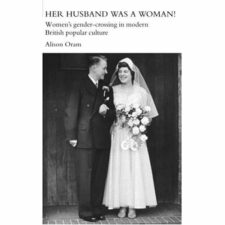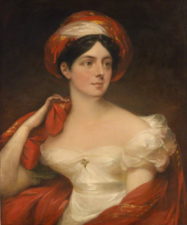The International airline world in the early 1960’s was a very different place from the one we encounter today. There were relatively few professions open to women other than the traditional secretary, nurse, teacher or housewife so the stewardess life was considered very glamorous and desirable.
I was hired in 1961 by Pan American, then considered to be the premier world airline, except probably by the employees of British Airways (BA)! Hiring standards were strict: only young single females, 5ft 2in to 5ft 8in, preferably college educated with at least one foreign language.
A five week initial training course covered cabin services, which included daily practice of the seven course first class dinner service, cocktail mixing, first aid and emergency procedures. (The last two were tested every year.) Personal grooming, hair and make up were also an important part. Our weight would be checked regularly to keep us close to our hiring weight and a grooming supervisor was present at every pre-flight briefing to check we had complied with all the regulations of hair length, minimal jewellery, correct shoes and gloves (white in summer, black leather in winter to be worn at all times when off the plane), and the presence of the obligatory girdle. (An unrestricted rear apparently not acceptable when we were bending to serve the window seats.)
Not surprisingly these standards were not equally applied to the male pursers who were often overweight.
We frequently flew with the same crew of six for a whole month on a 707. As we shared hotel rooms and the trip pattern could last as long as ten days, I made many good friends, some of whom have lasted to this day. Many flights were lengthy and, with no rest seats for crew added to the constant time changes, it was extremely hard work both physically and mentally. On our round the world flight we were required to accept any currency for drinks which led to complicated mental arithmetic to cope with exchange rates without a calculator.
We took it in turns to work the galleys. In First Class this included cooking a roast, which was carved at the seat, heating up the various main meals, the fish course and setting up elaborate carts for hors d’oevres, salad, cheese and desserts. For breakfast we cooked eggs to order. In Economy the meals were loaded in large pans and had to be served up on individual plates – breakfast being more of a challenge: scrambling the raw eggs for 120 passengers in a small oven, particularly in turbulence!
Nonetheless, it was not all hard work. Pan Am was a totally international airline so at the end of the flight we could be anywhere in Europe, Africa or Asia with all the sightseeing and shopping one could want. We bought gloves and shoes in Rome, perfume in Paris, pearls in Japan, had clothes made in Hong Kong, and everything else in India! Yet it was more difficult to shop in those days. Credit cards were neither easy to obtain, nor accepted, no cash machines, hotel exchange rates never generous, so we knew all the good money changers – not always strictly legal! The per diem allowance we were given in the hotel at check-in was to be used for food.
There was no in-flight entertainment in those days. Many passengers were happy to read, sleep or look out at the world beneath. Glued to their computers or watching films today, many people miss the breathtaking sights passing below. I have seen huge glaciers on Greenland, an erupting volcano, the Pyramids, Victoria Falls and the amazing Northern Lights among many other glories. Often on long night flights passengers liked to come to the galleys or the lounge in First Class to chat and I met many interesting people. This was in the days before private jets, so we carried many world leaders as well as the cream of the film world who included my favourites, Cary Grant and Sidney Poitier, both absolutely charming. Other personalities had horrible reputations. Not surprisingly, I suppose, the only thing that impressed my much later colleagues was that I took the Beatles to America at the height of their fame, whilst it was ‘Who was Cary Grant?’
This all made the work more interesting as we felt we were hostesses in the correct sense. We were trained to treat the passengers as if they were our guests. Our education and languages were more important and put to good use.
Keeping a personal life going was more difficult. In those days before mobile phones, e-mails, answerphones and the like, we could be hard to keep a track of when we could be away for such long periods. Only the truly determined men succeeded. Inevitably, however, marriage took away some of my friends. In the 60’s US domestic carriers would not allow married women to fly and they had to ‘resign’ at 32. This was not so at Pan Am but many did leave to marry as men wanted their wives at home to take care of them!
Pregnancy was not allowed until after the Civil Rights Act of 1964 and a court case was won on our behalf. The company had to offer the job back to any woman who had had to resign due to pregnancy, and the ruling meant all their existing seniority rights had to be returned to them. In the airline world, seniority ruled everything from bidding for flights and vacations to work positions.
Throughout the 60’s we women at Pan Am had equal pay, equal ability to fly senior cabin position of purser and now freedom to marry and have children. All that, plus changes in technology (passengers barely notice, let alone chat with the crew these days) have changed the work, attitudes and eventually the way the public regard flight crews. The change from ‘air hostess’ to ‘flight attendant’ has advanced women’s rights in some regards, yet the advances are not unproblematic.
Janet Morgan (c) July 2012
Editor’s Note: This is a shortened version of the presentation made by Janet Morgan to the SHAW (Society for the History of Women of the Americas) at Bunel University, London, 14 March 2012. Janet Morgan drew attention to the change in status of women working as flight attendants, when there was a shift in focus from being and being seen as glamorous and envied when ‘true’ hostesses, later being seen as ‘trolley dollies’ with the need for equal opportunity cases to be run to assert the value of the work done by women in these roles. Thus came the transition ‘From Hostess to Trolley Dolly’ then to Flight Attendant. JAS

